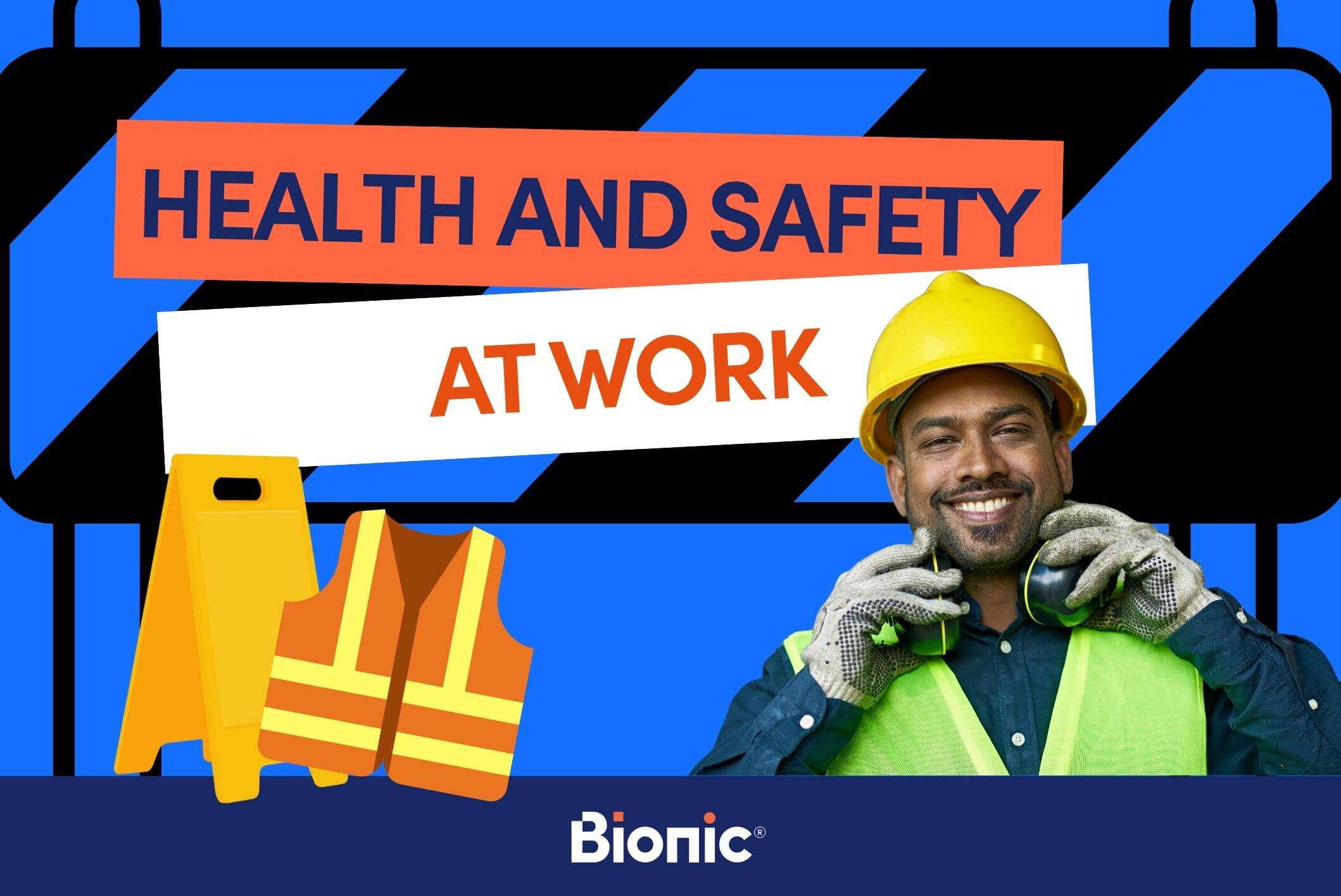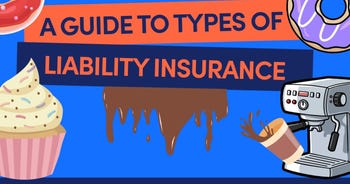UK health and safety for small business owners in 2025/26
It might not always seem like it, but the workplace can be a dangerous place.
In of 2024, 1.7 million workers reported suffering an illness or injury as a result of their work.
And it’s not just the workers that suffer, with an estimated 33.7 million working days lost over the last two years, employers are losing labour to work-related illness or injury that may have been preventable.
That’s why complying with health and safety regulations should be one of your top priorities no matter what business you’re in.
As well as the various legal requirements you have as an employer to protect your employees and any visitors, it’s in the best interest of the business to make sure that your workforce is healthy and protected.
After all, healthy and happy employees do great work.
We’ve covered some key areas around what you need to know about health safety in the workplace in 2025/2026, with modern workplaces in mind.
There may be more information that we haven’t included that’s relevant for your business, so always make sure to do your research into health and safety.

Do I legally need a health and safety policy? What should it include?
Yes, in the UK the Health and Safety at Work Act 1974 is a legal framework that businesses with 5 or more employees need to follow. It outlines the duty of the employer which is protect employees and others while carrying out their work.
What am I legally required to do?
As an employer, you’re legally expected to:
- Have a written health and safety policy - If you employ five people or more in your company, by law you must have a written health and safety policy or document. Whether you use a printed version or store one online, it doesn’t really matter as long as your employees can access it.
- Have health and safety advice - You must ensure that all employees have access to competent and up to date health and safety advice. You can use posters or a handbook that is regularly updated.
- Disclose any risks - You must disclose any risks in the workplace to employees, customers or any other person who may be affected. This can be something as simple as displaying a wet floor sign over a spillage.
- Arrange preventative measures - Employers must effectively plan, organise, monitor and review all preventive and protective measures they put in place to avoid the worst happening.
- Consult employees - It’s important to speak with employees about any potential risks they may have encountered that have not been recorded, to keep your policy up to date.
What are the 4 main objectives of the Health and Safety at Work Act?
There are four main objectives of the Health and Safety at Work Act. They are:
Employer’s responsibilities
As an employer, you have a duty of care to your staff. You are in charge of maintaining equipment and making sure your employees feel safe. You should also:
- Provide training on how to carry out work processes safely
- Provide a safe place to work
- Work out a clear health and safety policy
- Carry out risk assessments
- Collaborate with health and safety experts
- Make sure all tasks are handled safely
- Make sure all staff concerns are heard
Employee’s responsibilities
- As an employee, you must take some responsibility for yourself in the workplace. This might include:
- Taking care of your own personal health
- Ensuring the safety of other staff members
- Not interfering with your workplace health and safety protocol
- Cooperating with your manager on matters of health and safety
- Asking proactive questions about health and safety in the workplace
Enforcement of health and safety legislation
The role of a health and safety inspector is to make sure businesses are following their own measures. They have important rights, like:
- The right of entry to your business premises without an appointment (as long as it’s at a reasonable time)
- The right to take equipment for inspection
- The right to request assistance from the police
- The right to question your staff on their health and safety measures
- The right to request health and safety documents
An HSE inspector can turn up at any time, but they may be more likely to visit if you operate in a high-risk industry (like construction), are starting a new business, or they’ve received complaints - so it’s best to be prepared.
Enforcement action
If your business is in breach of its health and safety policy, you might face legal implications. These can include:
- Legal Notices - These can include improvements and prohibitions. Improvements tell you what is wrong within your business and provide you with a deadline to fix it. Prohibitions, on the other hand, tell you to stop dangerous practices immediately.
- Prosecution - These can include large fines and, even worse, court cases or sentencing.
What you need to include in your health and safety policy in 2025/26
As you can imagine, times have moved on since the original Health and Safety Act was passed. There have been recent changes to reflect modern working conditions – here's an idea of what you need to include:
- All types of workers - You need to make sure your policy includes on-site staff and any remote workers. This means you need to outline how you manage digital wellbeing if you’re staff are working at home (even some of the time).
- Who is responsible - If you’re on a construction site, in a kitchen or even an office, you need to define who is responsible for employee health and safety. Whether this is a manager or you as a business owner. Remember to keep this updated if you take on new staff.
- Actionable procedures - Include how you manage risks and reduce the chance of injury, detailing all your workplace hazards but also any risks for remote workers - including and digital systems or people employees can refer to help with wellbeing.
Keep in mind, there may be other areas you need to include in your health and safety policy that are specific to your business.
Modern add-ons to your risk assessment
A traditional risk assessment looks at the physical risks you may face in your business, like slipping on a greasy floor in a kitchen or a box falls on an employee in an overcrowded stock room.
But it’s also a good idea to include broader risks that come with home working, such as mental health and cybersecurity.
Remote working risks
Here are some examples of some remote working risks:
- Home office setups - Consider things like proper office chairs and desks to carry out work.
- Mental health - Think about work-life balance, workers being isolated and the impact of work-based traumas on your employees. For example, a builder witnesses a colleague fall from a height.
- Technology security - Consider cyber security training, secure communication tools, and data protection measures as cyber-attacks are increasing in small businesses.
- Travelling - Risks associated with hybrid working patterns and client visits, especially if carrying and unloading equipment.
What are the risks of not complying with health and safety standards?
If you fall behind on your safety standards, you could be fined or prosecuted and have the weight of employee injury or even death on your conscience – it's just not worth the risk.
If you run a business where there is a clear risk of death of an employee, customer or the member of the public then it’s really important you take health and safety seriously.
In the unfortunate event someone does die, and you haven’t followed strict health and safety procedures, you could be investigated for a failure of duty of care.
Not to mention the unpleasant situations that follow — like informing the deceased’s family and supporting employees who may also be suffering because of the accident.
Do I need insurance to ensure safety by law?
While having the right insurance doesn’t guarantee protection in every situation, especially if negligence is involved, it can play a key role in protecting your business should incidents occur.
- Employers' Liability - You need employers' liability insurance if you have any employees, including part-time staff and temporary workers. This can help protect against injury or illness caused as a result of their work.
- Commercial motor insurance - If you have a vehicle that is owned by the business, then you need a commercial vehicle policy or potentially a fleet policy if you have a number of vehicles. This is a legal requirement. However, if you have a personal vehicle that’s for occasional business use, you should be able to use it as long as you have ‘business use’ noted on your personal car insurance policy. At Bionic, unfortunately, we cannot help insure your business vehicle, but it’s likely we can help insure other business operations.
Are there any other insurance covers I should consider?
- Public Liability - While not a legal requirement, public liability is essential to help protect against claims from customers, suppliers, or members of the public. Many of your suppliers or your commercial landlord (if you have one), may require this in order to work with you.
- Equipment breakdown - This helps cover the unexpected breakdown of equipment, like your boiler, for example. For theft or damage from other events, you should consider taking out specific cover for machinery or equipment.
What are the penalties for breaching health and safety?
Understanding what penalties, you might face for breaching health and safety can help you make better decisions when it comes to training your staff, fixing equipment, and keeping your policies up to date. As of 2025, the consequences of breaching health and safety rules could depend on the following:
- How severe the casualty
- How far your standards fell below acceptable levels
- Your business size measured by annual turnover
- Any previous health and safety breaches and cooperation with preventing future casualties.
What charges could I face?
If you’re found to be negligent in your health and safety practices in the UK you could be charged with a criminal offence, the most severe being for Corporate Manslaughter.
You could face this charge if someone dies while working for you due to a breach of health and safety rules. This can not only apply to the business owner but also to whoever is responsible within your business for not complying with your policy.
In fact, the Health and Safety Executive (HSE) even lists public convictions on their site – with some companies or individuals being fined up to millions for being convicted of breaching health and safety regulations that have resulted in severe casualties or death.
Real world examples of breaches
There are many examples on Reddit of employees sharing stories of small businesses they work for, not complying with health and safety regulations:
- One reddit user was told multiple times to climb down a drain outside of his work ‘normal work duties’. He refused and reported the company to HSE, and then was fired as a result! In these instances, other Reddit users advised this employee to report the employer to warrant an inspection.
- One other reddit user was asked by his employer to perform some ‘other duties’ which resulted in him working outside for 6 hours in extreme heat leading to continuous sunburn, without any protective measures in place. As an engineer, he also was involved in serious flash incidents that could have been fatal. His workplace showed aggressive behaviour when he asked about safety protocols. Again, Reddit users in the comments told him to anonymously report the employer to warrant an investigation.
High risk triggers that could lead to an investigation
You never know if your business could end up being investigated in the following circumstances:
- An employee or member of the public complains about dangerous working conditions
- You need routine inspections as you are in a high-risk sector
- You’ve had serious incidents happen that need emergency services
- A whistleblower reports your safety failures
- You have follow-up visits after previous enforcement action
As a small business owner, the learning here is to get on top of safe practices to avoid injuries or harm otherwise your employees may report you.
How to document your health and safety practices for protection
It's important to document everything that demonstrates your commitment to health and safety in your small business, including (but not limited to):
- Regular health and safety policy reviews with dates and signatures
- Training records showing safety training you’ve provided
- Risk assessment updates when there are any business changes
- Evidence of investment in safety equipment and systems
- Records of employee meetings and feedback on safety
Keeping a record of this evidence in a high-risk sector like engineering or construction, for example, could help you in cases where employees report you to HSE. Showing that you have actively tried to keep your employees and business safe can go a long way in courts (in the unfortunate event it ever comes to that.)
Learn more about what to do if an employee suffers an injury and get to grips with RIDDOR.
How can I make my workplace safer for my employees?
There are several steps that you can take to ensure you’re making the workplace as safe as it possibly can be.
These could include:
- Carrying out regular risk assessments - Employers should follow the five steps to risk assessments to make sure the workplace is safe.
- Select contractors with the skills to work safely - If you’re employing contractors for projects, you need to make sure that they possess the skills, knowledge and qualifications required to carry out the work efficiently and safely.
- Create a written health and safety policy - Writing up a health and safety policy document is a legal requirement for businesses with 5 or more employees. It’s also a way to efficiently and easily communicate your procedures company-wide.
- Provide necessary PPE - As an employer, it’s your responsibility to provide any necessary personal protective equipment that can help reduce any risks in the workplace. You also must provide this to all employees, free of charge.
- Provide effective health and safety training for staff - For your staff to understand the risks and how they should act on them, providing training will help. In some industries, like catering, you’ll need to be regularly up to date with all health and safety knowledge.
- Display any useful information - Health and safety posters or free, accessible PDFs are a legal requirement in the UK.
For more government information and advice on health and safety, please head to the HSE website.
How Bionic can help protect your business
While it can sometimes seem overwhelming to get to grips with health and safety in your business, there are unfortunately no ways to reduce ALL risks. That’s why it’s important that you implement the necessary steps for the safety of your employees and also that you protect your business with the right insurance.
At Bionic we can help with insurance for construction businesses, builder insurance and insurance for many other UK backbone businesses from sole traders to shops and takeaways.
Get in touch with the Bionic team to discuss your needs or get more information on business insurance today.








